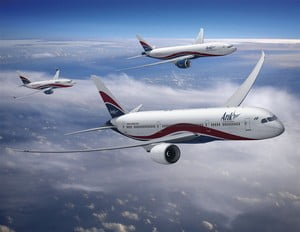I wrote an earlier article detailing the steps towards becoming an airline pilot. I no longer work in the airline industry, but switched gears a few years ago and decided to work as a pilot in the fractional industry. It’s a decision I wish I had made alot sooner then I did. The salaries are alot higher, the aircraft that you fly is usually brand new and the maintenance is superb. The work schedules are a little different and coming from an airline type work schedule it took a little personal adjustment to get used to being out on the road more than just a few days at a time.
Let me start by explaining what a fractional company is all about. Most of the passengers or customers we fly are very wealthy. Somewhere along the way they decided that the airlines were no longer accommodating their schedules or personal lifestyle. Most people cannot afford the luxury of purchasing and maintaining a private jet aircraft, so it used to be a higher barrier. About 10 years ago someone came up with the idea to take a private jet and break the ownership into ‘fractions’, then turn and sell pieces of those fractions to a customer base. The industry grew and now if you’ve got $350k lying around, you can buy 25 hrs of flight time in the smallest business jet in the market.
As a pilot looking to gain employment with one of these companies, the competition is fierce. Most won’t even take a look at your resume unless you hold an Airline Transport Pilots license, have at least 3,000 hours of total flight time (the average is 5,000 hrs) and have been a Captain flying large multi-engine aircraft or jet equipment in a 2-pilot crew scenario. Once you score the interview, press your suit and polish the shoes and get ready for a beat-down interview. The panel conducting the interview are looking for certain things in a candidate. Can you get along with other people?, Are you presentable in appearance and exhibit certain traits? etc. Usually there is a pilot and an H.R. person conducting the interview. IF you make it thru that, they’ll screen you with a flight simulator exam.
Once you get the call for employment, you’re in for the ride of your life. The training is fast paced and hectic. You will usually attend a 2 week company indoctrination class followed by a 3-4 week simulator training event. Once you finish these you’ll receive a aircraft type ride and then it’s back to the company facilities for more training. From the time you begin til the time you get out on the road for your first real trip with passengers is about 6 months. It goes fast and is usually a blur.
Most companies allow you to live where you want but some require you to live in a base or domicile. Depending upon the size of the company’s fleet of airplanes you may begin your trips out of your base or the company will airline you to where ever the airplane is at the moment. Once you arrive at your destination the fun begins. There is usually a grocery list of things to do before your passengers arrive, and usually you have only an hour to get them done. If it’s your first flight in this airplane an hour is really pushing it. You’ve got to conduct a pre-flight, check the manuals, check the cleanliness of the airplane and make sure the aircraft stock is all there. Usually the crew that has left the aircraft there before you has done all of this, but sometimes there are a few surprises. Once you get all of your pre-flight departure chores done, now it’s time to grab the flight plan and get a clearance. Assuming there are no surprises there like weather, maintenance, or other issues that’s usually the easiest part of the day. Now it’s time to go sit in the FBO and wait for your passengers.
People that have the means to fly in a private jet are usually very easy to deal with. Most don’t like to waste time and when they show up they are ready to go. I have flown a lot of famous people and most just want to just get on the plane, settle in their seat and read the paper, watch a movie, or sleep. Once they’re aboard it’s time for takeoff. Flying a business jet is no different then flying an airliner, so I won’t bore you with those details. The one thing I will comment about is that fractional flying encompasses operating into and out of smaller airports. Some with great facilities and others with the bare minimum. It does add to the variety and workload and does for some people accustom to the airline regimen, take some getting use to. On arrival at our destination we unload our passengers bags and bid farewell. Time to now clean the plane and get it read for the next flight. Sometimes we’ll ferry an hour later to pick up a passenger, other times the passenger(s) are departing out of the airport we just landed.
At the end of the day, we put the aircraft to bed and head for the hotel. The other difference in fractional flying is that you have no idea what cities you’ll be overnight in and how long you’ll be there. So if you’re looking for a regimented flying schedule with long overnights so you can play golf, or visit the local attractions, then this job is not for you. But if you like variety and the lifestyle where you don’t know what you’re doing day-to-day on the road, then this might be the job for you.



